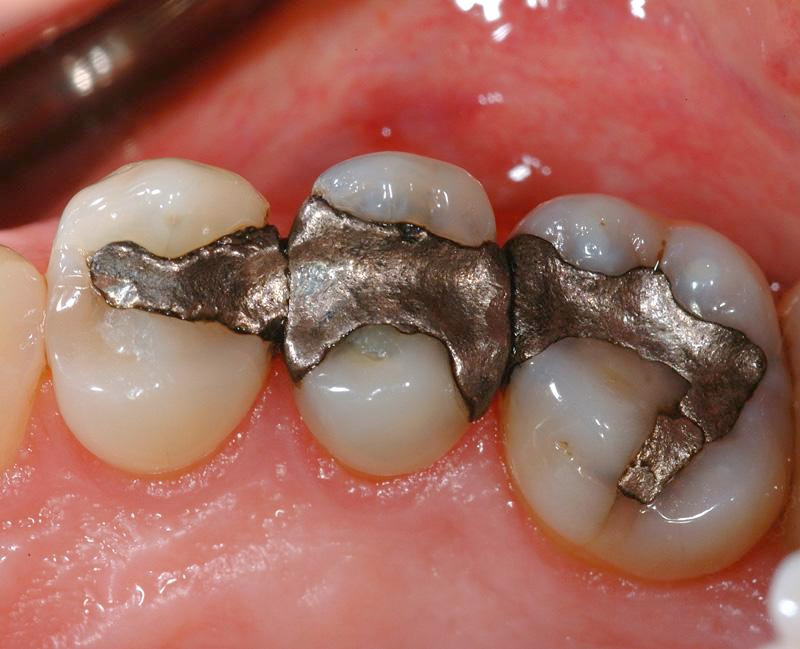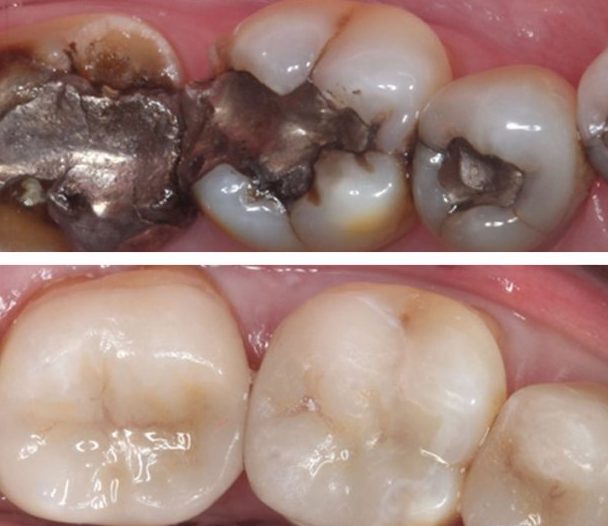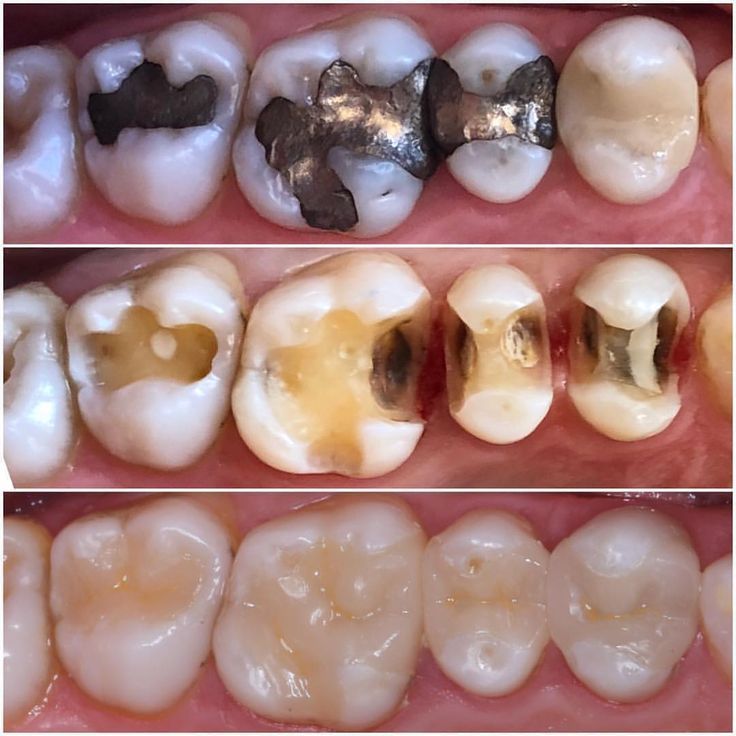What Is An
Amalgam Filling?
If you're wondering 'What is an amalgam filling?', then you've come to the right place! As a dentist, I am often asked this question, and whether they are harmful and should be replaced.
Technically, an 'amalgam' is a mixture of anything, but it usually refers to an alloy of mercury and any other metal, usually silver. When used in dentistry for a filling, it is usually referred to as 'silver-tin amalgam'. This means that as well as mercury and silver, a small amount of tin is also added, and most modern dental amalgams also contain copper and zinc.
The first record of a dental amalgam being used for filling teeth comes from China during the Tang dynasty, in AD 659. There is a written record for 900 parts tin to 100 parts mercury and 45 parts silver.
Dental amalgam fillings were first introduced into the USA in the 1830s, and faced stiff opposition from the dental community at the time owing to the mercury content. In fact, modern dental amalgam materials contain around 50% mercury. Yes! About half of a dental amalgam filling is mercury!
 Three amalgam fillings.
Three amalgam fillings.What Is An
Amalgam Filling?
- Advantages -
As you see in the image above, dental amalgam fillings are dark grey in color, and we have just seen that they are 50% mercury. So, they don't look like a natural tooth, and they have potential problems with toxicity. Why would any dentist want to use this material to fill tooth cavities?
Before the widespread use of amalgam, the vast majority of fillings were made from gold. This means that getting a filling was quite expensive due to the cost of the gold. But there was another problem - the most widespread technique at that time was the 'gold foil' method.
This involved placing a very thin foil of gold into the bottom of the tooth cavity and literally hammering it into place with a tiny mallet. Then another wafer-thin foil was added, and hammered onto the first one. With the physical hammering and the heat generated, the foils would fuse together.
Then another wafer-thin foil was added and hammered into place. And another, then another, until the cavity was filled. As you can guess, this could take the dentist hours to fill one cavity, and was physically demanding and tiring for both the dentist AND the patient! So, gold foil fillings were expensive and quite traumatic. Most people with a tooth cavity could only afford to get the tooth pulled out.
It turns out, there were (and still are) are significant advantages to dental amalgam as a filling material. Dental amalgam fillings are:
- Cheap - the materials are inexpensive.
- Fast - it only takes a few minutes to pack a cavity with dental amalgam.
- Durable - if well done, amalgam fillings can last for years. As well as being very hard, amalgam tends to seal the cavity well due to the edges corroding slightly, and the materials in amalgam seem to inhibit the growth of bacteria inside the cavity.
Compared to the traditional gold fillings of the time, dental amalgam was relatively cheap, fast for both the dentist and the patient, and also lasted for many years. It meant that fewer people had to opt for extraction, and could keep their teeth for longer.
What Is An
Amalgam Filling?
- Disadvantages -
But, as we have seen, there are a number of disadvantages to dental amalgam fillings too. The obvious disadvantages of amalgam fillings are:
- The color. While it is possible to polish amalgam fillings to make them shine like chrome (literally), it has to be done at a separate appointment, and so takes up more of the dentist's time. So 99% of amalgam fillings are dark grey or black. Not a great look.
- That mercury. Most people are aware that mercury has the reputation of being poisonous or toxic, but it depends on the form of the mercury. You can read more about this problem at my page on mercury toxicity.
- Amalgam fillings set over a period of a few hours. During that time AND afterwards, they tend to expand by a few percent. This puts pressure on the sides of the cavity, and in some cases can cause a fine crack in the tooth enamel. This results in the side of the tooth breaking off later.
- Because amalgam is so hard, it tends to wear down much more slowly than the tooth that is is sitting in, resulting in the filling standing up higher than the surrounding tooth substance. It also means that the tooth the amalgam is biting on will get worn down, too.
In the top left hand corner of the next image, you will see a broken cusp next to a big amalgam filling. There is no decay. The expansion of the amalgam is responsible.

In the lower half of the image above, you will see normal-looking teeth. If you look carefully, you will see that they are the same teeth as in the upper section, but the amalgam fillings have been removed and exchanged with tooth-colored composite fillings. You can read more about getting your amalgam fillings replaced at my page on amalgam filling replacement.
What Is An
Amalgam Filling?
- Alternatives -
The image below shows an initial situation with three black amalgam fillings and an old tooth-colored filling on the top right.
The middle image shows the cavities left behind after removal of the amalgam fillings. The lighter areas at the bottoms of 2 cavities are lining material, and the darker areas at the bottoms of the cavities are staining left by the old amalgam fillings.
The bottom image shows how the teeth look after being built up with tooth-colored composite dental fillings. Much nicer!

So, what are the alternatives to dental amalgam? There are several possibilities here, depending on the depth of the cavity, how wide the cavity is, and what the tooth with the cavity bites on. You could have:
- A tooth-colored composite filling.
- A tooth-colored ceramic (dental porcelain) filling (an inlay or an only).
- A cast gold inlay / onlay.
- A tooth-colored ceramic crown or zirconia crown.
- A gold crown.
You can read more about the options for fillings at my page on dental filling materials.
You can read more about the options for a crown for teeth with very big or extensive cavities at my page on dental crowns.
I hope this page on amalgam fillings is useful!



